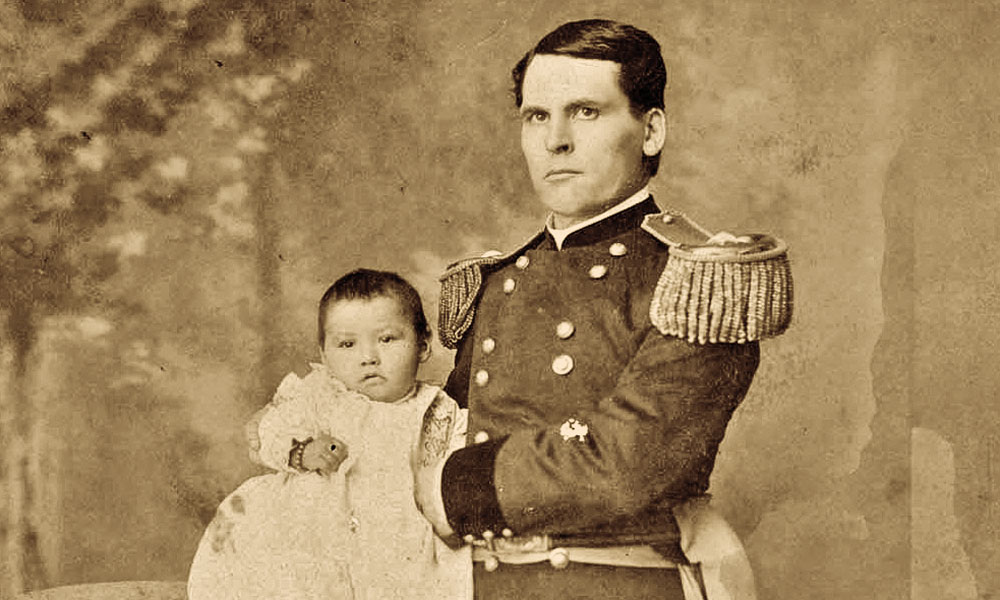21 Manifest Destiny Realized
Manifest Destiny Realized
Jim Ross-Nazzal
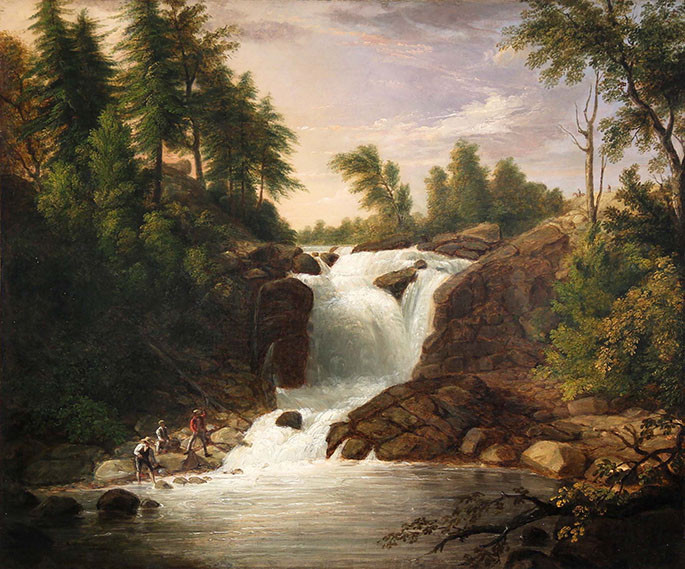
In the early to mid 19th century a reform movement in painting called the Hudson River School swept the United States. Influenced by both pastoral and Romanticism, these landscape artists tried to capture the grandeur of the area surrounding the Hudson River Valley to the American West using perspective to try to show just how big were the trees, rivers, water falls, and mountains. 100 years later a landscape photographer named Ansel Adams reintroduced the grandeur of the American West as a conservationist and a environmentalist.
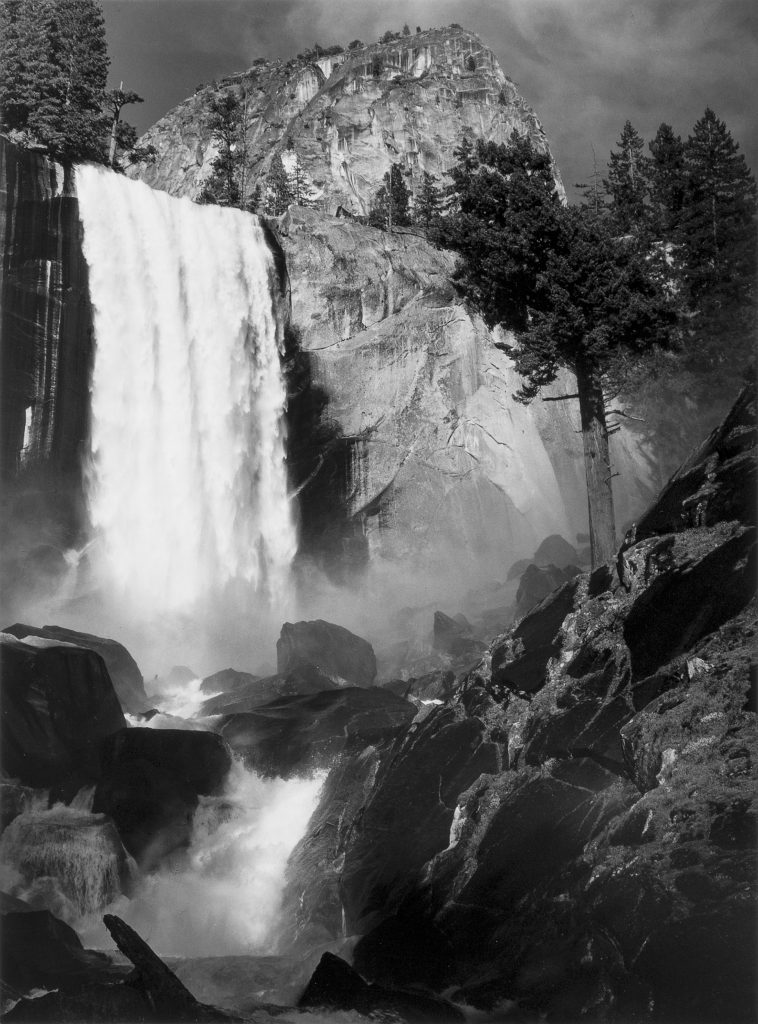
And in between, Frederick Jackson Turner, an historian of the American West, freaked out because he thought the West was closed and that meant the end of the American success story. Born in the hailstone and sarsaparilla belt of Wisconsin (Portage), Turner concluded that the frontier was the place where American democracy, liberties and freedoms were able to evolve and without the frontier, without the West, the US would no longer be able to develop and thus would be as stagnant as England, France, or Germany, based in part on the census of 1890 that said there was no room for anyone to move to the West. The East was European (old, tired, worn, outdated) and as people migrated West they lost those outdated ideas and ways of doing things and instead developed new ways of thinking and doing, ways that became less European and something new, something American, until a point in which the democratic traditions, economic practices, and culture were truly American. Something unique. Something superior. Very Darwinian. His famous paper, “The Significance of the Frontier in American History,” he read at the 1893 Colombian Expo in Chicago for the American Historical Association.

The West existed for other reasons, such as to send our excess population. Those landlocked European nations had no place they could send their excess populations to their cities just became more overcrowded, more polluted, more violent, more uncivilized. And by sending our excess population out West to create new settlements, they were also creating new markets thus there was an economic aspect to the American West. Finally, Americans believed that the West was the place where new ideas were tried. Take woman suffrage for example: Territory of Wyoming (1869), Territory of Utah (1870), Washington (1883), plus school board and municipal elections. But these ideas are thin veneers. The Washington Territorial Supreme Court stripped the right to vote from women in 1887 and places like Wyoming and Utah supported woman suffrage in the hopes of attracting female settlers, in part.
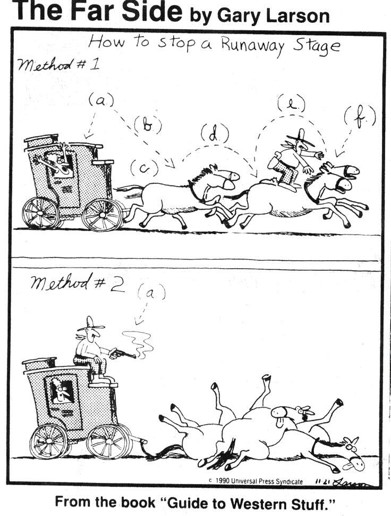
There was (maybe still is) this romanticization of the West. The rugged individual moved West. With hard work and enough time, you too would reclaim your economic position in American society. The thousands and thousands who poured into California in the mid 19th century looking for gold, the Americans who set up their own ranches to drive their herd of cattle to markets in Lubbock or Kansas City or maybe to a railroad depot that would take the cattle to slaughter houses in Chicago. Finally, all of those independent ranchers would hire the quintessential icon of the American West: the cowboy. Nothing more romantic but manly, independent but cooperative, American but universal than the cowboy.
“Many African American cowboys were employed as horse breakers and for other tasks, very few of them became ranch foremen or ranch managers, some even became famous rodeo stars. Many of the first cowboys were born into slavery. Others became famous farm owners, cattle trailers and peacekeepers in Indian territory.”[1]
By Destiny Vasquez:
One of the most known and respected cowboys in Texas is William “Bill” Picket. He first started working as a cowboy at the age of 18 with his brothers, it was called “Pickett Brothers Bronco Busters and Rough Riders Association.”[2] This led him to invent the technique that is called “bulldogging” which is grabbing cattle by the horns and wrestling them to the ground. He then went to demonstrate his skills at county fairs which led him to the next big thing. Picket became a showman joining the 101 Ranch Wild West Show. He toured around the world showing everybody his bulldogging skills and was also a part of early motion pictures. Even though Picket had all this fame and was well liked he still faced discrimination since he was black. This caused him to claim of being full blooded Indian if not he would be banned from certain rodeos.
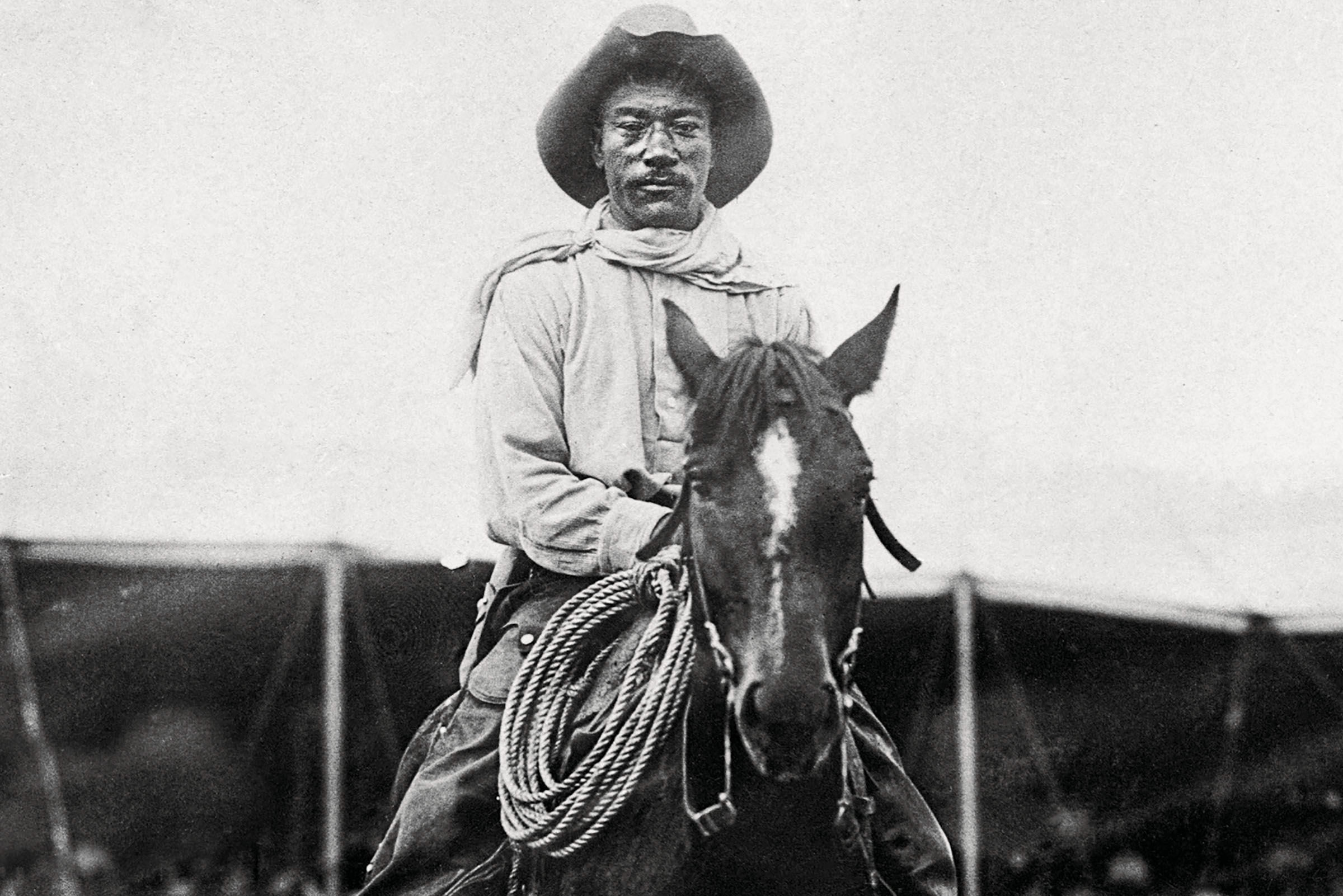
Rodeo cowboys were different from working cowboys. Rodeo cowboys were those who brought entertainment around the world to many families. Cowboys performed their skills to the public for their amusement. The shows consisted of bronco riding, steer roping, and cow pony races. The Wild West Shows were very popular that many places claim the first rodeo in America like Santa Fe, New Mexico, Deer Trail, Colorado, Pecos, and Texas.[3] The more the rodeo grew the more confusion that came along with it. Many rodeos were given the title holder of World Championship Rodeos which led to various of rodeo cowboys winning championship titles in one year.[4]
By Damaris Morin:

Bose Ikard was one of many born slaves, he was born in July 1843 in Noxubee county, Mississippi. He grew up with his master Dr.Milton Ikard. Ikard learned how to farm, ranch and fight Indians as the civil war grew near, under his owner’s family. The war left Ikard a free man. In 1866 Ikard went to work as a trail driver for Oliver Loving. Loving was later killed and Ikard stayed at work with Oliver Loving’s partner, Charles Goodnight. He became very close friends with Goodnight. Ikard was Goodnight’s detective and banker. Ikard eventually wanted to settle but in Colorado but ended up settling in Weatherford buying a ranch there, due to the fact that there weren’t many blacks in Colorado. Ikard started a family around the time that Indian attacks were common. He had participated in a running battle with his former master, Milton Ikard. Ikard eventually had 15 children and in his later years he would still go to cowboy reunions. “Bose Ikard died in Austin On January 4, 1929.”[5]
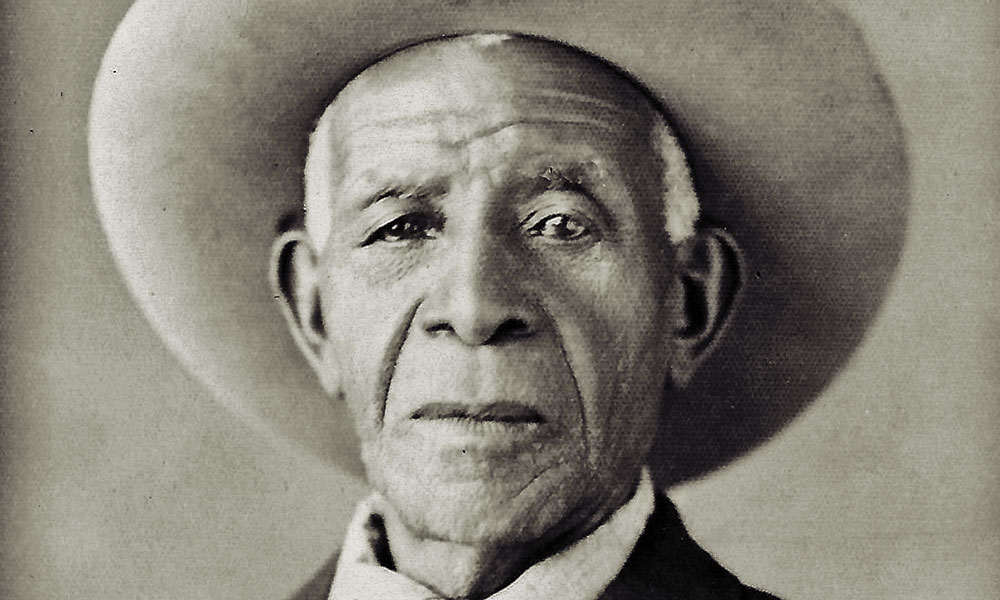
African American cowboys, “Predominated in Ranching Sections of the Coastal plains between the Sabine and Guadalupe rivers”.[6] Daniel W. Wallace known as (80 John) is one of them. Daniel W. Wallace was a very successful rancher he was born near Inez in Victoria county on September 15 ,1860. He started riding cattle trails when he was young and ended up working for cattlemen Winfield Scott. He would get paid five dollars a month and used his accumulated savings towards buying a ranch in Loraine. He saw a big future ahead of himself but he knew the lack of education was an obstacle, so he decided to travel to Navarro County, Texas where he was able to learn how to read and write.[7] He ended up having 1200 acres of land and 500 to 600 cattle. “Daniel W. Wallace was a member of the Texas and southwestern cattle raisers association for more than 30 years.”[8]
As April Soto points out, there was an intersection between Texas and African American cowboys:
Interestingly enough, if you dig a little you discover that so many of those gold miners failed, went bankrupt. Those ranchers failed, went bankrupt and even American cowboys were delegated to the position of hourly employee. More often than not, failed miners, ranchers and cowboys became employees of millionaire entrepreneurs such as George Hearst (father to William Randolph Hearst) or J.J. Hill. And not just individuals but towns came and went. When the mining was good, the towns were flush with cash. The was populated by tens of thousands of active towns. But as soon as the mine or quarry ran dry, the miners lost their jobs, their homes, the local industries folded and the once bustling towns became ghost towns, such as Colbalt, Idaho, Diamond City, Montana, Miner’s Delight, Wyoming[10] and DeVoe South Dakota.
The West, for Turner, was a process and a place. A place where European ideas can be stripped of the outdated, iconoclastic ways and replaced with more highly evolved ways to created the American way and the further West Americans pushed, the more highly evolved liberty, democracy and individualism became. Thus the American way was constantly getting better, advancing, refining. As long as the US had a West all was good and fine and nice.
But of course Turner was way off base. The West was not this magical place that facilitated national progress. In fact Turner forgot about all those other countries that have a west to include the one right north of us. Canada’s West is much more expansive than America’s West. None the less, Turner got it wrong. Here’s why.
The West was not some Great Equalizer. Blacks were unwanted, Chinese were excluded by federal law starting in 1882, and men out numbered women by nearly 2 to 1 is so many places. During Reconstruction there was a wave of African Americans were migrated West. They got as far as Kansas. I am sure that the ghosts that haunted the ex slaves followed them, along with their ex confederate immigrants out west where it would be so easy to continue the old ideas that African American men are sexual exploiters, lazy, and needed to be separated from white women in order to protect the latter from the former.[11] And lynching was a national phenomenon.[12]
Horacio Rodriguez (Spring 2020) looked at some legal history regarding immigration: “The Chinese Exclusion Act in 1882 was the first significant law restricting immigration into the United States. The Chinese Exclusion Act had prohibited all immigration of Chinese laborers as well as banning Chinese women from immigrating to the United States. It also had affected Chinese who had already settled in the U.S. resulting in Chinese immigrants to be permanently illegal by excluding them from U.S. citizenship. In 1888, the Scott Act expanded upon the Chinese Exclusion Act, prohibiting reentry into the U.S. after leaving and clarified that the law applied to ethnic Chinese regardless of their country of origin.”
“Many cases opposing the Act were decided in favor of the United States government due to the fact of Chinese not being able to testify in court. Such as the Fong Yue Ting v. United States trial where the decision reaffirmed that the government’s power to deport foreigners is an absolute and unqualified right, just like its power to regulate reentry.[13] The court had called Chinese people “inferior” and warned that if “Chinese-born people were to have a right to testify in court, they would soon claim the right to vote.”[14] One of the few cases that decided against the United States government was the Yee Shun v. United States trial in which resulted in allowing Chinese to testify in court.”[15]
“Following the passing of the Chinese Exclusion Act, a period known as the ‘Driving Out’ era was created. In this period, anti-Chinese Americans physically forced Chinese communities to flee to other areas living separated from their families and to build their own community to survive on as Chinatown.”
Like other minorities in the West, Chinese immigrants were never safe. Google “Chinese immigrant massacre US West” and you’ll come up with the 1887 Snake River massacre, aka Hells Canyon massacre, 1885 Rocks Spring massacre, 1871 Los Angeles massacre, and the list goes on. In 1997 I researched, wrote about and presented a paper on the 1887 Snake Rive Massacre at my first conference. 34 Chinese gold miners were shot dead, their bodies mutilated, then thrown into the swollen Snake River.[16]
Regarding Rock Springs, “American laborers in particular felt threatened by the presence of any foreigners whom they competed with for work. H.L Knight was one of the leaders of the Workingmen’s Party of California, which was founded as a result of large unemployment of white laborers. Knight had openly used racist ideas in order to validate the party’s struggles and hopes to restrict the use of cheap Chinese labor. In the Workingman’s address by Knight he criticized what Chinese immigrants eat, he generalized their character as a whole and he was intimidated by their wages.[17] His ideas fed the Party’s agitation and justified the violent acts over Chinese immigrants in America. The massacre of Rock Springs 1885 is an example of the hostility towards Chinese laborers. White unionists attacked the small Chinatown of Rock Springs because the Union Pacific did not acknowledge the white laborers whom would strike for better working conditions and instead valued Chinese laborers for their cheap wages and efficiency.”[18][19]
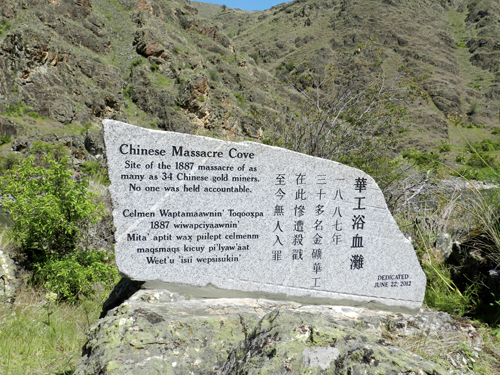
Remember, “several thousands of these immigrants ended up booking their passage to the United States using a credit ticket. Which means that their passage was paid in advance by an American businessman and because of that they had to work for the American businessman for a period of time.[20] Despite all the difficulties that Chinese immigrants faced there were still more and more Chinese immigrants arriving in the United States. As a result, there was a new law that was passed that was called the Chinese Exclusion Act of 1882 that forbade any more immigration from China.[21] This caused the immigration from China to stop for a ten-year period. But after that a new law was passed that extended the Chinese exclusion act it was the Geary Act of 1892. During the 1870s the white Americans formed clubs that were anti-Asian club. They organized boycotts of Chinese products and promoted anti-Chinese laws.[22] Some of the laws that were passed were the Californian constitution of 1897. This denied a Chinese citizen the right to vote or to work for the state.”[23]
And as noted in the previous chapter, the Americanization movement of Native American children certainly was not to the betterment of those children.[24] For example, here’s the story of Zintkala Nuni as researched by Leonel Lizalde, Alejandra Lopez, Tatyana Marquez, Damian Mendez, and Paulina Mosqueda in the Spring of 2020.
Nuni, a good example of Americanization, was the only survivor from the Lakota Sioux tribe at the Wounded Knee Massacre in 1890.[25] Nuni is important because her life portrayed how Americanization aided to forming the ideology of Manifest Destiny and how it attempted to eliminate Native American cultures.
The increase of westward expansion during the nineteenth century was a result of a culmination of social, economic, and political factors. While pushing westward many white Americans found the Native American tribes to be an obstacle for the growth of the United States.[26] The Native Americans were seen as trespassers rather than natives and inferior to white society. The genocide of an estimated five to fifteen million was enough to sate white Americans and from there the United States began to place what few remained of them in reservations. Even then, Native Americans were still seen as a problem by the U.S. citizens that bordered them.[27] It was not enough to let them live on a reservation and continue their culture; white Americans felt that it was within their rights, in fact, their duty to take the youth and introduce them to American society and to educate them.
At the start of the 1880s, clergymen, government officials, and social workers all worked to assimilate Native Americans into American life. The government permitted reformers to remove Native children from their homes and place them in boarding schools, such as the Carlisle Indian School and the Hampton Institute. There, they were taught to abandon their tribal traditions and embrace American productivity, modesty, and sanctity through total immersion. Schools, not only, acculturated Native American boys and girls, but also provided vocational training for males and domestic science classes for females.

“Gen. Leonard Colby of the Nebraska National Guard poses as a Seneca, gaining possession of Zintkala Nuni, the Lost Bird.” At the age of 16, Lost Bird runs away from boarding school, joins a Wild West show and searches for her roots in South Dakota.” She returns to her adoptive mother two years later and pregnant. Lost Bird “is placed by her [adoptive] father in the Mitford Industrial Home, a severe reformatory school.” Her child is stillborn. Her adoptive mother married Lost Bird off to a friend of the family, who gave Lost Bird syphilis. In 1912 she “goes to Hollywood and works as an extra in Westerns” then two years later joined Buffalo Bill’s Wild West Show. Lost Bird died in California of influenza in 1920 and her remains were reburied in Wounded Knee in 1991. She had been married several times. Had many children. Buried a few. And died impoverished. [28]
Though the story of Lost bird wasn’t much of an example, her survival of Wounded Knee is more than enough to see the treatment of American Indians during the Manifest Destiny era.[29]
The Wounded Knee Massacre ended with more than 250 Lakota Sioux dead. Zintkala Nuni was found underneath a dead body, presumed to be her mother, making her the only survivor of her tribe. General L.W. Colby brought it upon himself to take her under his wing which only led to her living a lost and unhappy life.[30] Nuni was ultimately living in a white world where her sense of being was greatly affected. She was completely stripped away from her culture and traditions and forced to live an Americanized life just as many other Native American children had to. Nuni was constantly made fun of and questioned for her appearance by others. In the book “Lost Bird of Wounded Knee,” it recounts Lost Bird’s attempts at making peace within herself and the social forces that challenged her.
Instead of culturally integrating Native Americans into their white world- American people, during the time period and belief of the Manifest Destiny, pushed the Natives away and instead made the Native American people fear them even more. The American’s divine doctrine of expanding all throughout North America did not care for the deaths of millions or for the path of cultural destruction it paved for the majority of Native Americans, all it cared about was ruling over a whole continent of God-fearing white citizens. Forced cultural assimilation, also known as “civilizing”, consisted of ripping children away from their homes, away from their families, and placing them in a foreign and alien way of life. Native children were often bullied, humiliated and hated on by their white peers and some unfortunate few led a similar life of misery and strife such as Zintkala Nuni.
Frederick Remington was one of the most famous painters of the West: Native Americans, cowboys and animals. But he detested every person who was not his racial equal. He detested the tens of millions of New immigrants. He detested the Chinese immigrants out West as well as Native Americans, Africans Americans, and others he deemed to be less fit than himself to populate this country. He once wrote to a friend “I’ve got some Winchesters, [and] when the massacring begins . . . I can get my share of ’em and what’s more I will. Jews – injuns – Chinamen -Italians – Huns, the rubbish of the earth I hate.”[31]
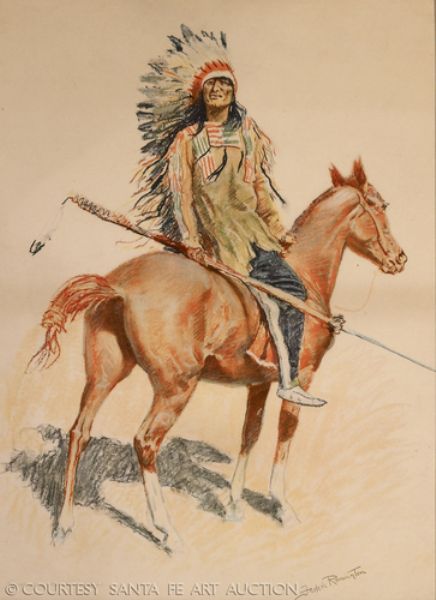
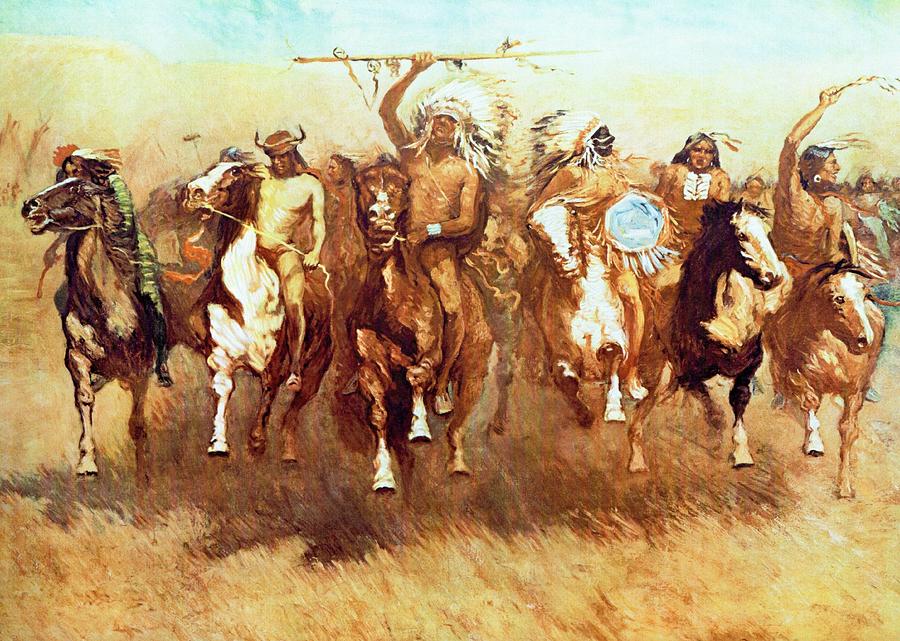
Some fought back, such as Mexicans and Mexican Americans residing in Colorado and New Mexico. A group called the White Caps, in English. Or, Las Gorras Blancas. Ulises Ramirez wrote what follows in the Spring of 2020.
At the end of the treaty of Guadalupe there where a lot of Mexicans that had become American citizens in the southwest. There were promises made, such as that no more land would be taken away and that they were going to be allowed to live in peace. Unfortunately, this promise was not kept as many Mexican Americans lost their land sometimes even by force.[32] This because of the railroads that where finally starting to connect the east to the west. It didn’t help that around this time because of their origin as Mexicans these now United States citizens where treated as second tier citizens as many other minorities at the time. The legal system failed these people as most judges wouldn’t even listen to the demands of these people. Judges would favor the white settlers and give away land that had belong to people for generations.[33] Constant frustration of these new settlers arriving to the west and lack of help from the government towards the Mexican American citizens lead to people having to fight for themselves as the government when involved wouldn’t help.
In Las Vegas, New Mexico conflict with the locals arose with the new settlers as homesteaders and cattle operators started to build fences around very large areas of land. This led to a lot of anger from the Mexican American residents as they were expected to live of less land.
The process to fight for these lands would take years and when addresses the case would go to the white settlers. All of this was discovered of being illegal, these two district attorneys where making money by claiming lands and selling them. This was very profitable as Las Vegas was becoming a very profitable capital. Constant loosing of land and ignored led to these Mexican Americans to take matters into their own hands.
Thus, all this frustration accumulated to a lot of small conflicts and in New Mexico this led to the creation of a group of warriors by these frustrated Mexican American citizens. These “bandits” called themselves “Las Gorras Bancas”(1890). This group began burning down the fences that where put around the areas. Las Gorras Blancas cut miles of wire fence that belong to the hated merchant, captain of the militia and even the sheriff. After the fences of Sheriff Lorenzo Lopez holding over 1500 head of cattle were destroyed most of the remaining wire post was removed.[34]
The classification of these Mexican American citizens as second tier citizens caused two very different changes in the culture of and identity of these people. On one hand there were the people that joined these profitable merchants and helped them take land from their own people and on the other hand this situating in New Mexico united the rest of the these Mexican Americans to stand up to the people that where trying to take the lands that had been their own for a very long time. [35]
The group Las Gorras Blancas is a good example of what happens when to cultures collide, in this case white settlers and Mexican- Americans. Some of this Mexican Americans decided to join the “new wave” while other fought to preserve their own way of life. As seen by the sheriff Lorenzo Lopez, he paired up with the new settlers and made more money while the Mexican American citizens decided to fight back thus forming “Las Gorras Blancas”
BTW, how many people occupied the West? The 1890 Census. The thing that Frederick Jackson Turner used to proclaim the West to be closed said that there were . . . <drum roll> …. 2 <cymbal crash>. Two people per square mile was the tipping point for the federal government to announce the West to be closed. Now, if the West is closed where will be send our excess population? Where will be try our new ideas? Where will be create our new markets? How can Americanism develop, evolve and perfect itself? At the same time US Captain Alfred T. Mahan wrote a book about a history of great empires called The Influence of Sea Power Upon History (1890). That book said you need to have a strong, offensive Navy in order to be a great world power. And, finally, get ready for this one, a young Teddy Roosevelt read that book a few years later he will be in a position to put into motion exactly what Mahan calls for. Roosevelt then builds the modern US Navy. And five years after Turner proclaimed the calamity of losing the West, the US will go to war with the Spanish in part for a coaling station for trade with China and part of our new West -the Philippines.
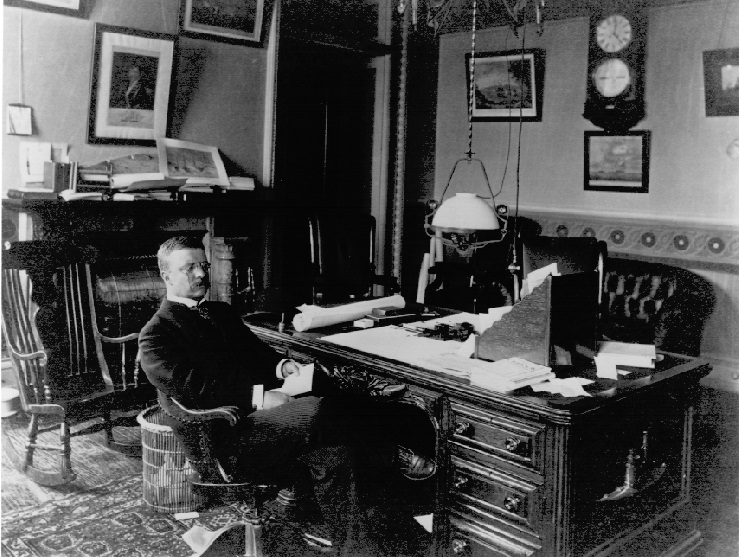
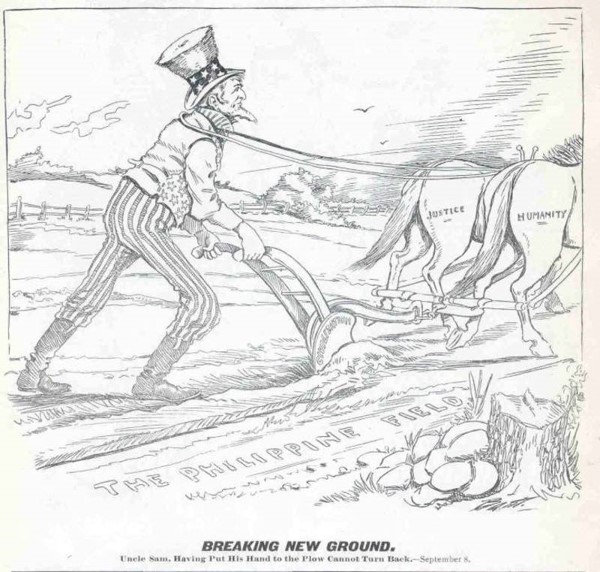
I wish to thank April Soto, Horatio Rodriguez, Luis Gonzalez, Jeason Pardo, Ulises Ramirez, Destiny Vasquez and Damaris Morin for their interest in the American West. Their contributions enhanced this chapter.
As with the other chapters, I have no doubt that this chapter contains inaccuracies, therefore, please point them out to me so that I may make this chapter better. Also, I am looking for contributors so if you are interested in adding anything at all, please contact me at james.rossnazzal@hccs.edu.
- Damaris Morin, Spring 2020 ↵
- Legends of America. Last assed December 2019 https://www.legendsofamerica.com/bill-pickett/ ↵
- Rodeo Education http://www.prorodeohalloffame.com/rodeo-history/ ↵
- Rodeos last accessed June 15, 2010 https://tshaonline.org/handbook/online/articles/llr01 ↵
- Handbook of Texas Online, Joseph Andrew Blackman, "IKARD, BOSE," accessed February 02, 2020, http://www.tshaonline.org/handbook/online/articles/fik03. ↵
- Handbook of Texas Online, Teresa Palomo Acosta, "BLACK COWBOYS," accessed February 02, 2020, http://www.tshaonline.org/handbook/online/articles/arb01. ↵
- Searles, M. (2007, January 28) Daniel Webster Wallace (1860-1939). Retrieved from https://www.blackpast.org/african-american-history/wallace-daniel-webster-1860-1939/ ↵
- Handbook of Texas Online, Martha Earnest and Melvin Sance, "WALLACE, DANIEL WEBSTER," accessed February 07, 2020, http://www.tshaonline.org/handbook/online/articles/fwaah. ↵
- Nodjimbadem, Katie. “The Lesser-Known History of African-American Cowboys.” Smithsonian.com. Smithsonian Institution, February 13, 2017. Accessed February 10, 2020. https://www.smithsonianmag.com/history/lesser-known-history-african-american-cowboys-180962144/ ↵
- https://en.wikipedia.org/wiki/List_of_ghost_towns_in_the_United_States ↵
- https://eji.org/reports/online/lynching-in-america-targeting-black-veterans ↵
- https://www.citylab.com/equity/2017/01/a-comprehensive-map-of-american-lynchings/513293/ ↵
- “Fong Yue Ting v. United States, 149 U.S. 698 (1893).” JUSTIA. US Supreme Court. Accessed February 3, 2020. https://supreme.justia.com/cases/federal/us/149/698/ ↵
- Blakemore, Erin. “Chinese Americans Were Once Forbidden to Testify in Court. A Murder Changed That.” History. May 10, 2019. Accessed February 3, 2020. https://www.history.com/news/chinese-exclusion-act-yee-shun-legal-rights ↵
- Wishart, David. “Territory of New Mexico v. Yee Shun.” Encyclopedia of the Great Plains.” Accessed February 2, 2020. http://plainshumanities.unl.edu/encyclopedia/doc/egp.asam.021 ↵
- https://en.wikipedia.org/wiki/Hells_Canyon_massacre ↵
- http://historymatters.gmu.edu/d/5046 last accessed 09 February 2020 ↵
- https://www.history.com/this-day-in-history/whites-massacre-chinese-in-wyoming-territory. Last accessed 02 February 2020 ↵
- This section by Valerie Gonzales, Spring 2020. ↵
- https://courses.lumenlearning.com/suny-ushistory2os2xmaster/chapter/the-impact-of-expansion-on-chinese-immigrants-and-hispanic-citizens/ ↵
- http://pressbooks-dev.oer.hawaii.edu/ushistory/chapter/the-impact-of-expansion-on-chinese-immigrants-and-hispanic-citizens/ ↵
- http://pressbooks-dev.oer.hawaii.edu/ushistory/chapter/the-impact-of-expansion-on-chinese-immigrants-and-hispanic-citizens/ ↵
- Luis Gonzalez and Jeason Pardo, Hist1302 students, Spring 2020 ↵
- STONE, H. E. "WHAT IS AMERICANIZATION?" The Journal of Education 88, no. 20 (2206) (1918): 538. Accessed February 3, 2020. ↵
- Medicine, Bea. "Sioux Women in a White World." The Women's Review of Books 13, no. 6 (1996): 18-19. Accessed February 2, 2020. ↵
- Vandenbroucke, Guillaume. "The U.S. Westward Expansion." International Economic Review 49, no. 1 (2008): 81-110. Accessed February 10, 2020. www.jstor.org/stable/20486789. ↵
- Ghere, David L. "Indian Removal: Manifest Destiny or Hypocrisy?" OAH Magazine of History 9, no. 4 (1995): 32-37. Accessed February 10, 2020. www.jstor.org/stable/25163041. ↵
- https://www.sdpb.org/learn/nativeamerican/lost-bird-of-wounded-knee/timeline/ ↵
- LAW, NATIVAM, US, “Columbia Electronic Encyclopedia, 6th Edition; 2019”, p1-1, 1p Accessed February 02, 2020 ↵
- “Encyclopedia of the Great Plains,” Encyclopedia of the Great Plains | WOUNDED KNEE MASSACRE, accessed February 4, 2020, http://plainshumanities.unl.edu/encyclopedia/doc/egp.war.056) ↵
- https://new.artsmia.org/stories/the-redskins-and-the-twisted-history-of-depicting-native-americans/ ↵
- Samora, Julian, and Patricia Vandel Simon. A History of the Mexican-American People. Notre Dame, London: University of Notre Dame, 1993. Pg, 103 ↵
- History 111: U.S. History Since 1865 By Lisa Lane (Open Stax) Available https://cnx.org/contents/ox4GMXvG@4.59:XSv7GQfS@3/The-Impact-of-Expansion-on-Chinese-Immigrants-and-Hispanic-Citizens (Last accessed February 2, 2020) ↵
- LAS GORRAS BLANCAS OF SAN MIGUEL COUNTY By David Correia (online) November 4, 2013 Available https://newmexicohistory.org/2013/11/04/las-gorras-blancas-of-san-miguel-county/ (last accessed February 2, 2020) ↵
- “Las Gorras Blancas of San Miguel County” 2013 ↵
